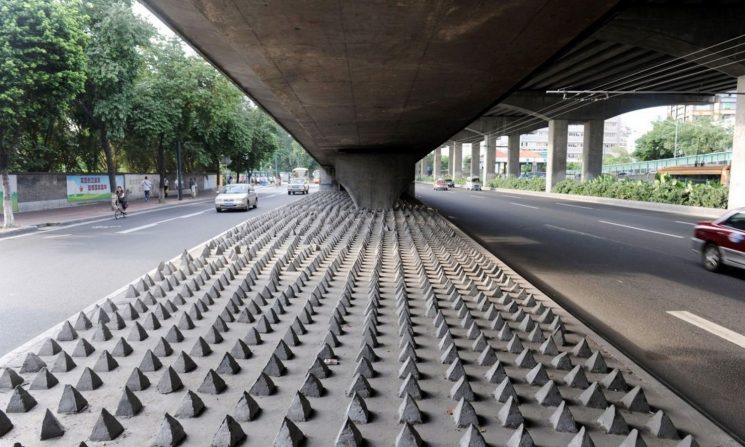
By Tessa Nacke
While waiting at a bus stop, you may take note of a few things. A trashcan, an overhang, maybe even a route map. But, there is also a bench. How thoughtful! A nice bench for people to sit on while they wait for the bus.
But wait, what’s the weird rails in between the seats? Are those spikes?
“Hostile architecture can be as subtle as simply not providing a place to sit, as obvious as a wall or fence to keep people or animals out or as aggressive as metal studs embedded in pavement. These designs often go unnoticed in the busy cityscape,” The New York Times said.
Often called ‘anti-homeless’ urban planning, many claim hostile architecture is a way to keep the cities safe from aggressive homeless persons.
“Initially, it was used to stop African Americans, who primarily used public buses for transport, from accessing the beach by building a bridge too low for the beach buses to pass under. In the 1980s, it gained further acceptance, used to increasingly push rough sleepers out of parts of cities over fears that visible homelessness would discourage visitors or investment,” Single Homeless Project said.
In actuality, hostile architecture isn’t solving the problem of homelessness. Hostile architecture pushes the homeless further away from support and minimizes the urgency required to support the homeless.
In Los Angeles alone, over 46,260 people are homeless. To be homeless is to have no fixed place of residence, which can be due to a myriad of reasons. Oftentimes, many homeless people resort to a public bench, a corner and even the sidewalk for solace and shelter.
While homelessness is no easy issue to tackle, it is definitely not solved by putting awkward rails or fences under stairs.
The problem with hostile architecture is that it keeps people away from public spaces that are supposed to be, well, public. The spikes that line a park bench are not only keeping the homeless from loitering but also the general public. This can lead to decreased tourism, which will eventually economically affect the very city that enacted these ‘modern’ benches.
In addition, just because you can’t see any homeless people, doesn’t mean that they aren’t there. In fact, the installation of hostile architecture pushes many homeless away from shelters or any type of care.
Installing hostile architecture affects the general public in more ways than just a sleeping person.





